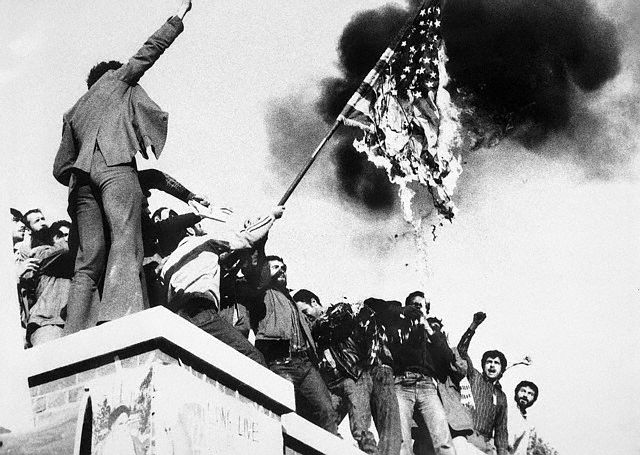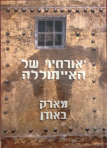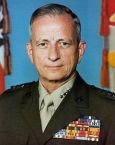His special forces teams increased their operational tempo to such an extent that they carried out 300 raids per month, dismantling al-Qaida cells one after the other
In US President Donald Trump’s first address to Congress he described Islamic State (ISIS) as a “network of lawless savages that have slaughtered Muslims and Christians, and men, and women, and children of all beliefs. We will work with our allies, including our friends and allies in the Muslim world, to extinguish this vile enemy from this planet.”
Trump is not the first to view an organization of Islamic extremist, Salafist jihadists as a network. One of the first to do so was retired US Army general Stanley McChrystal. In his book The Insurgents (Simon and Schuster, 2013), Fred Kaplan describes McChrystal as a special operations expert. “He entered the force as a parachutist in the 82nd Airborne, then rose through the ranks in Ranger and special forces units, climaxing in the fall of 2003, when he took control of the Joint Special Operations Command.” According to Kaplan’s book, “McChrystal saw that al Qaeda was a network, each cell’s powers multiplied by its ties with other cells. It would take a network to fight a network, so McChrystal built one of his own.” Under his leadership JSOC’s network worked. His special forces teams increased their operational tempo to such an extent that they carried out 300 raids per month, dismantling al-Qaida cells one after the other.
On January 2017 President Trump ordered the new US defense secretary, USMC Gen. (ret.) James Mattis, to conduct a 30-day review of US strategy on ISIS. Mattis is supposed to get back to the president with a full range of options to fight that threat. The previous administration chose a counter-terrorism strategy that refrained from using “boots on the ground.” Instead president Barack Obama preferred surgical strikes using drones and special forces, while avoiding at all costs the use of ground forces on a large scale. That was the strategy that led to the killing of Anwar al-Awlaki in Yemen by a US drone strike and Operation Neptune Spear in Pakistan, during which SEAL Team Six killed Osama bin-Laden. The latter was led by McChrystal’s successor at JSOC, Adm. William McRaven, himself a former Navy SEAL.
In addition the US adopted a policy of “leading from behind” – providing support through intelligence, air power and special forces to the campaign waged by local ground forces. This was the case Libya and now in the war against ISIS. That’s understandable given the fact that in a war such as this there are no magic solutions. One knows where it starts but not how or when it ends. Usually it turns to a bloody and prolonged war. The ground maneuver, as shown during Operation Protective Edge, is only the beginning: the forces become vulnerable to IEDs, snipers, anti-tank missiles and mortars. Threats familiar to US troops from their wars in Afghanistan and Iraq.
Secretary Mattis is a combat veteran who knows the Middle East and Iraq in particular, having fought there more than once. He led the 1st Battalion, 7th Marines, in the Gulf War, commanded a Navy-Marine task force in Afghanistan, and the entire 1st Marine Division during the march on Baghdad and the battle for Falluja. He understands better than most the danger in sending troops into, as former secretary of state Gen. (ret.) Colin Powell described in an article, “a crisis with an unclear mission they cannot accomplish.”
However that policy didn’t prove as useful in the fight against ISIS. Deploying ground forces is not without cost, but on the other hand is highly effective when it comes to hurting and defeating the enemy. That was, for example, the case in Operation Cast Lead, during which the IDF’s 35th Paratroopers Brigade, led by Col. Herzi Halevi, operated in the midst of the Gaza Strip, killed Hamas militants, destroyed the enemy’s arsenal and effectively prevented rockets from being launched at Israel’s cities.
“I’m in the business of providing the president with options,” said Chairman of the Joint Chiefs of Staff USMC Gen. Joseph Dunford recently, in regard to the forming of a new strategy against ISIS. Dunford, who served under Mattis in Iraq as the commander of the 5th Marine Regiment, revealed that there are currently around 500 US special forces soldiers in Syria, working with Syrian Kurdish and Arab forces in their efforts to strike the ISIS stronghold of Raqqa, in what he called “about as complex an environment as you can be [in].”
Though it’s not likely that the new strategy will include the use of large-scale ground forces, given the background of Secretary Mattis and CJCS Dunford, one can assume that they understand the need for a growing presence of US troops on the ground.
That presence will probably will be reflected in increased activity of special forces, mainly from JSOC. The current commander of JSOC is Gen. Austin Miller, who just like McChrystal began his career as a paratroopers officer (82nd Airborne Division), served in the Rangers and commanded a contingent of Delta Force operators in the Battle of Mogadishu (and was awarded the Bronze Star). The most significant operation so far carried out the during his term as commander of JSOC is the raid carried out by the Navy SEALs on an al-Qaida in the Arabian Peninsula (AQAP) headquarters in Yemen. The operation, the first commando raid authorized by Trump, turned into a shootout in the midst of the village because the force was compromised before hitting its objective. Navy SEAL Chief Petty Officer William “Ryan” Owens was killed and three others were wounded. 14 AQAP fighters were killed in the raid, some of whom were also terrorist network leaders and facilitators.
In his resent speech to Congress President Trump led a standing ovation for the Owens’s widow. Trump assured her that according to Secretary Mattis, her husband “was a part of a highly successful raid.” In the movie Annapolis, Lieutenant Cole (played by Tyrese Gibson), the company commander and a tough Marine, presents the cadets with a body bag and demands they “remember what that bag looks like with a body in it, because if you become officers this is where they’re going to put your mistakes.” That rule, that is very familiar to generals, applies to leaders of state as well, and should be taken to into account prior to approving the new strategy against ISIS.
The author is the coordinator of the Military and Strategic Affairs program at the Institute for National Security Studies (INSS) and the founder and operator of the blog “In the Crosshairs” on military, security vision, strategy and practice.
(The article was published in "The Jerusalem Post", March 7, 2017)










